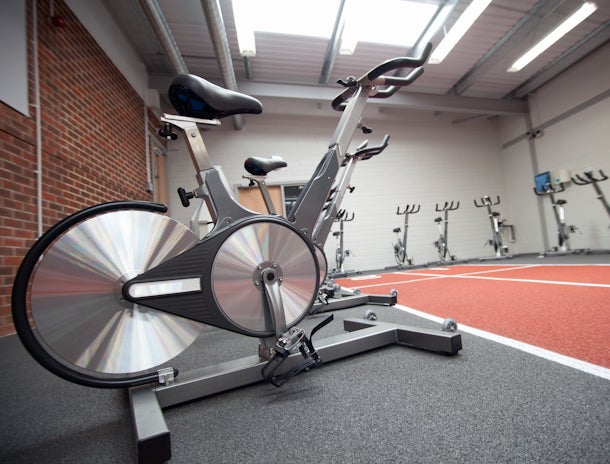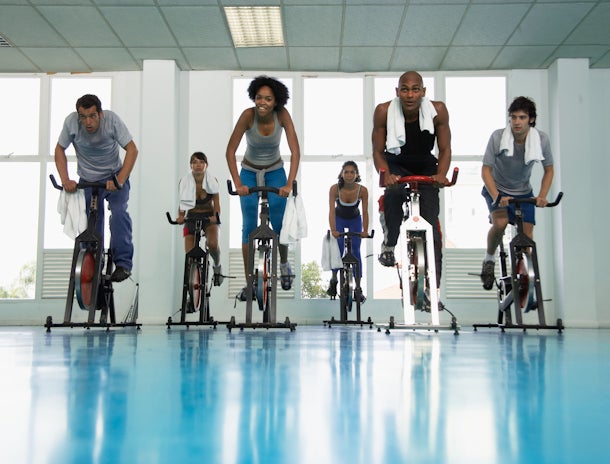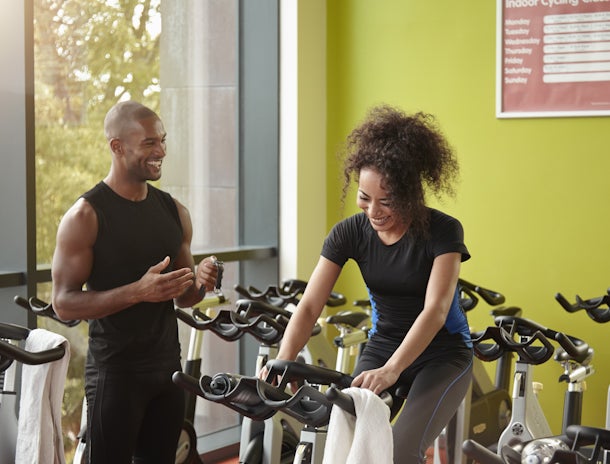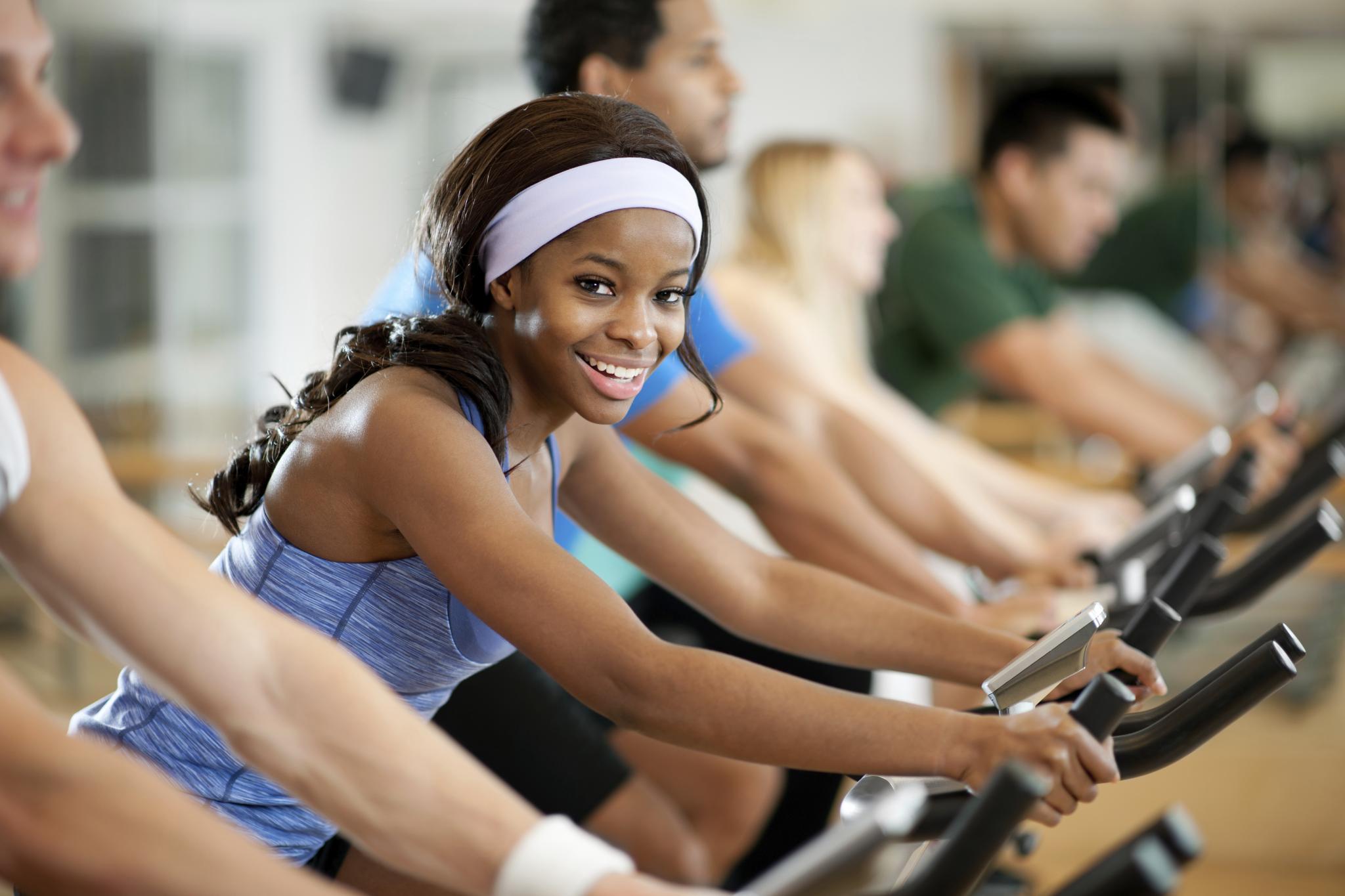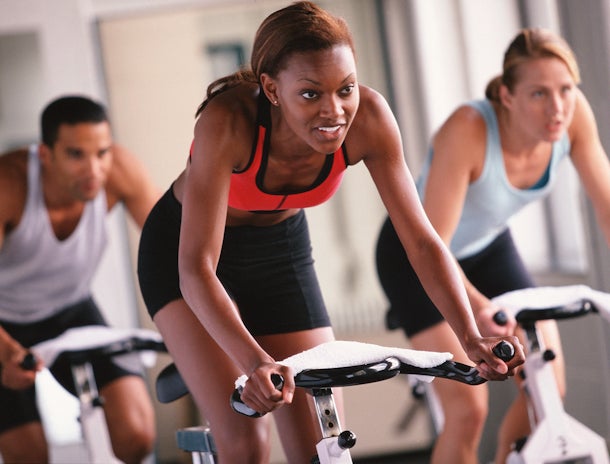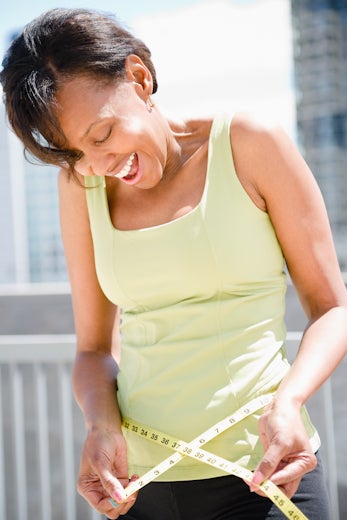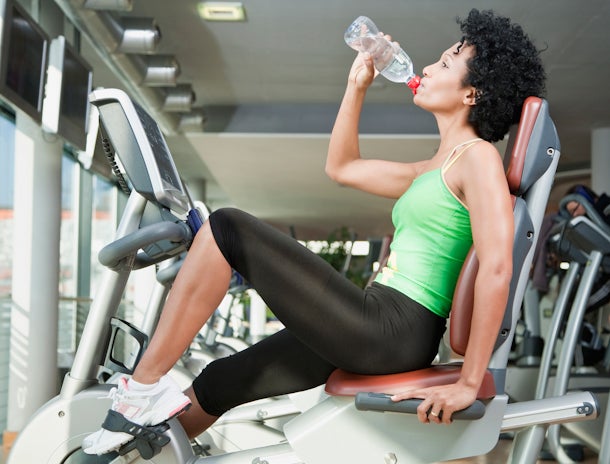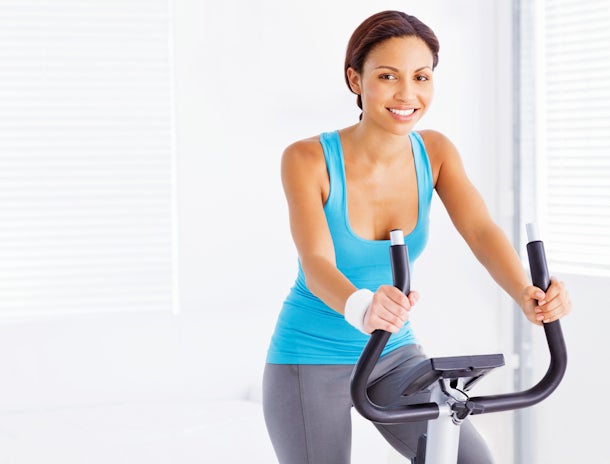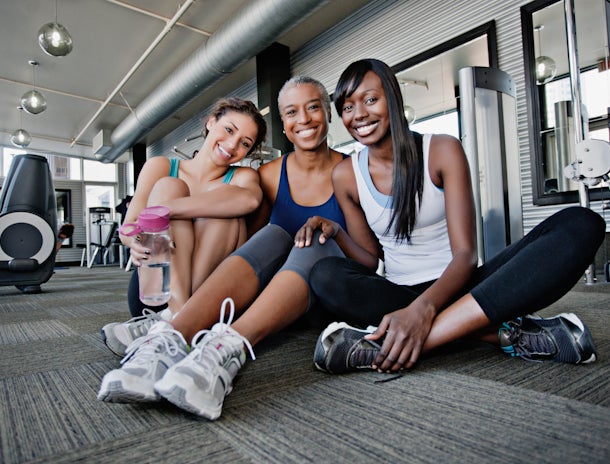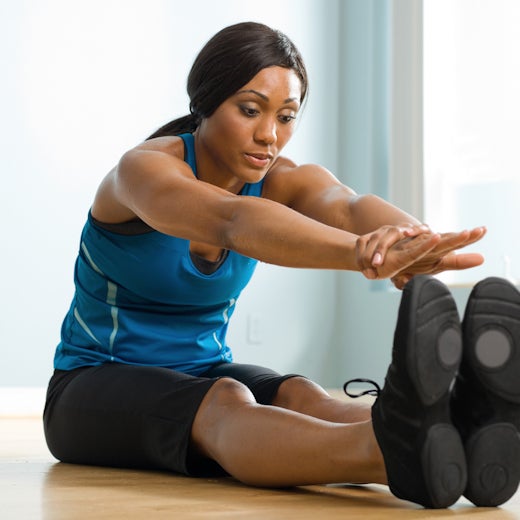“Spinning” is the trademarked name for indoor cycling (just like “Kleenex” is the trademarked name for tissue). It’s a high-intensity cardio and strength training class where each student rides a stationery bike for 45 minutes to an hour. The bike has a knob that allows you to adjust the resistance to make pedaling more or less challenging. There are also various positions on the bike, such as a seated sprint, standing climb or jumps, that make the class a total-body workout. You can expect to burn from 550 to 700 calories per 60-minute Spin class depending on your activity and fitness level.
As with any fitness class, it’s important that you connect with your instructor and fellow classmates. I love to make my classes interactive and encourage the students to get involved and participate with call outs and even high-fives. The right music is also key to making the class fun. If you’re not happy with your first class, try a new instructor or studio until you find the right fit.
Often times, the students who complain of discomfort during Spin class do not have their seat or handlebars positioned properly. Your seat should be at the height of your hip while you’re standing next to the bike. Feel free to move the seat forward or backward so that your backside is more comfortably positioned on the widest part of the seat. Your handlebar height can be adjusted to fit your comfort level, but should be adjusted approximately the same height as the tip of your saddle. Your instructor can help you find the best fit, so don’t be afraid to ask for one-on-one help.
“Spinning makes my butt hurt!” I’ve heard it time and time again. It’s totally normal for new students to experience soreness in the bottom or crotch area after their first ride. The soreness will go away as the buttock muscles become more toned and resilient to cycling. If you do experience soreness, a pair of padded, form-fitting bike shorts can help, but eventually, the seat won’t hurt the more you attend class.
It’s important to find your breathing rhythm during your cycling ride. You never want to hold your breath or keep your abs tight while on the bike. The way to breathe properly during exercise is to breathe in through your nose and out through your mouth. This forces you to take deep, abdominal breaths which provides your muscles with more oxygen to function more efficiently.
Indoor cycling bikes are stationery which mean they’re great for doing a wide array of both standing and seated exercises. Standing exercises in particular target the upper body since your core and back muscles are working to keep you steady on the bike and your arm muscles are engaged on the handlebars. Many instructors are also incorporating fun, high-energy dance moves on the bike, so don’t be surprised when you start losing inches on your upper body, too!
After every two songs, I remind my students to hydrate, hydrate, hydrate. The high intensity of indoor cycling means that you’ll sweat a ton which requires that you chug water before, during and after your class. Water helps your body run more efficiently so you can can work out longer and more effectively. An easy way to make sure you’re hydrated is to place three 16 oz. bottles of water in your gym bag. Drink one full bottle on your way to the gym, another full bottle during Spin class, and the third once class is over.
You’re not doing yourself any favors by slacking off on your resistance when your instructor tells the class to crank it up. Riding at a too-low resistance can do more harm than good since some moves, especially standing climbs, require medium to high resistance for safety reasons. You’re also decreasing the amount of calories you burn if your resistance doesn’t challenge you. On the other hand, if your resistance is too high in certain positions, you run the risk of a knee injury. Ask your instructor for help before class to get a better understanding of how to find the resistance that’s right for you.
I love to host class challenges with my students to make the class more competitive. You can do the same thing by getting your girlfriends together to organize a fun challenge among the group. Pool together $10 each as a prize for the gal who attends the most classes in a month or create a weight loss challenge as added incentive. Making it a team sport increases the odds you’ll stick with it and see results.
It’s vital that you cool down and stretch properly after your indoor cycling class. Because the knees and hips are never fully extended in the pedal stroke, the hamstrings and hip flexors are especially important to stretch after each ride. The safest stretch is a slow, sustained stretch. Hold each stretch for 30 to 60 seconds and practice deep breathing through the nose at all times.
